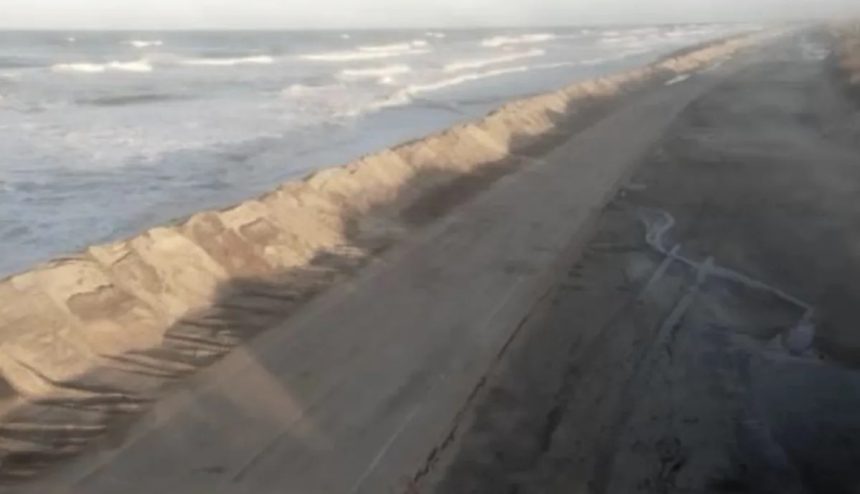HATTERAS ISLAND, N.C. – A major roadway that connects North Carolina’s Outer Banks reopened on Saturday after days of closures triggered by flooding from Hurricane Erin.
The North Carolina Department of Transportation spent hours clearing sand and debris from N.C. Highway 12, which is now deemed safe for travel.
A storm surge of upwards of four feet, in combination with a new Moon, produced significant overwash along the barrier islands, flooding the highway, especially during times of high tide.
Dare County lifted its mandatory evacuation order for Hatteras Island and instituted a staged reentry process to allow residents, property owners and business operators to return before visitors are permitted.
Priority 2 and Priority 3 groups, which include residents and business employees, were allowed back on the island beginning Saturday at noon, with all reentry restrictions set to expire on Sunday, when tourists can return.
Watch: Worst Of The Monster Waves Slamming East Coast From Hurricane Erin
The reopening includes areas such as Rodanthe, Salvo and the village of Hatteras, which rely heavily on the summer tourism season.
State officials encouraged visitors to check with hotels, rental companies and campgrounds, as some sites may have adjusted reservations.
Governor Josh Stein toured Dare County on Friday to assess the effects caused by Hurricane Erin and spoke about the impact.
“While Hurricane Erin remained offshore, flooding and high winds impacted roadways along the Outer Banks, and the closure of NC 12 means that small businesses have had their livelihoods cut off during peak season,” said Stein. “I am thankful to the emergency officials and first responders for their tireless work to prepare for and respond to this storm, and I am confident they will work quickly to ensure folks’ safe return.”
The highway is frequently impacted by hurricanes, nor’easters and even high-tide cycles, which cause overwash and temporary closures.
South Carolina Rattled By Earthquake Swarm
Transportation officials cautioned that drivers may still encounter floodwaters, especially since a frontal boundary remains draped over the region, leading to enhancements of showers and thunderstorms.
“Standing water on roadways may be saltwater, which is very damaging to vehicles. Proceed with caution, and drive slowly to reduce the risk of damage. If you encounter NCDOT personnel, please give them plenty of room to continue working to clear the roads,” staff with Dare County stated.
Additionally, the threat of rip currents is expected to remain elevated for much of North Carolina and the East Coast into next week.
Hundreds of rescues were reported in the days before Erin made its closest pass to the U.S., before the storm system accelerated off into the northern Atlantic, where it became post-tropical on Friday.
Officials have not released a damage estimate for costs associated with cleanup and recovery along the North Carolina coast, but previous similar events have run into the millions of dollars.
Original article source: North Carolina highway reopens following Hurricane Erin’s coastal flooding, erosion









